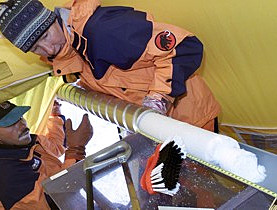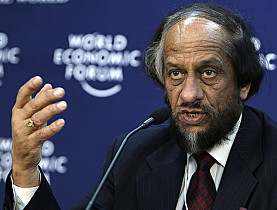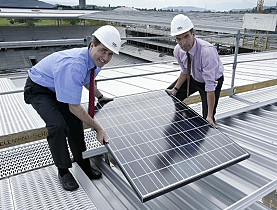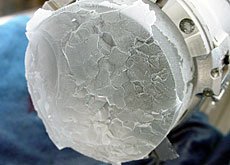New findings heat up climate debate

Global climate change progressed faster in the 20th century than at any other time during the past 22,000 years, warn Swiss scientists.
Their findings, based on the examination of ice core samples from the Antarctic and Greenland, add force to last year’s conclusions by the Intergovernmental Panel on Climate Change.
In a series of reports in 2007, the United Nations’ main climate body concluded that warming of the planet was unequivocal, sea levels were on the rise and snow and ice cover were decreasing.
Now, according to the study by climate scientists at Bern University and published in the current edition of the Proceedings of the National Academy of Sciences, there is clear evidence that greenhouse gas concentrations –indicators of climate change – are growing faster and faster.
The concentration of carbon dioxide in the atmosphere in the 20th century increased ten times faster than at any other period in the preceding 22,000 years.
The largest increase of CO2 in the preindustrial period was 31 ppm (parts per million) – and that took 1,600 years. There has been a 31 ppm rise in the past 20 years alone.
“The speed of climate change co-determines the impact on natural and socio-economic systems, and the capability of adjusting and adapting to climate change,” co-author Fortunat Joos told swissinfo.
This is because – as outlined in the study – a slow rate of change would “permit more time for adaptation than a fast rate”.
Temperature reconstruction
The researchers came to their conclusions by analysing atmospheric air samples as well as air bubbles trapped in ice. This method was used since it is difficult to reconstruct global temperatures of previous millennia.
“The challenge is to have temperature records from different locations and to collate them,” Joos explained.
“Instead of looking directly at temperature records, we examined greenhouse gas concentrations as a proxy for climate change since they are known to change the climate.”
He said the conclusions that climate change is progressing at a fast pace “has not been confirmed in such a stringent way before”.
The discussion up until now has focused on greenhouse gas concentrations, while little attention has been paid to the rate of change of the concentrations.
Radiative forcing
Greenhouse gases influence what is known in scientific circles as “radiative forcing”. This is the change in the balance between radiation coming into the atmosphere and radiation going out.
Radiative forcing was used to compare the influences of anthropogenic (human-related) and natural factors.
Anthropogenic factors are current changes in greenhouse gases such as carbon dioxide, methane and nitrous oxide. Natural ones include changes to solar energy output and emissions from active volcanoes.
The scientists also found that the average rate of increase in radiative forcing from the combination of the anthropogenic gases was larger during the industrial age than in any comparable period during at least the past 16,000 years.
swissinfo, Dale Bechtel
Carbon dioxide (CO2) is one of the major gases responsible for greenhouse effect and global warming. In Switzerland it represents around 80% of harmful emissions.
The other gases include methane, nitrous oxide and hydrocarbons.
Despite ambitious emission targets, greenhouse gas emissions have actually risen by 0.4% in Switzerland since 1990.

In compliance with the JTI standards
More: SWI swissinfo.ch certified by the Journalism Trust Initiative





You can find an overview of ongoing debates with our journalists here. Please join us!
If you want to start a conversation about a topic raised in this article or want to report factual errors, email us at english@swissinfo.ch.